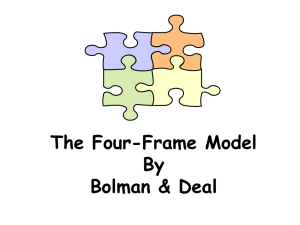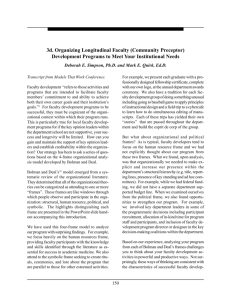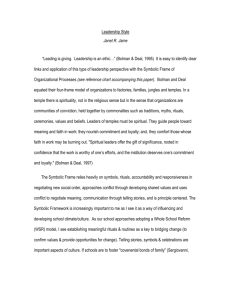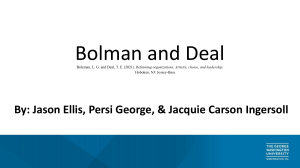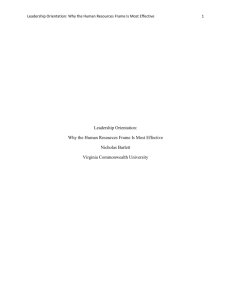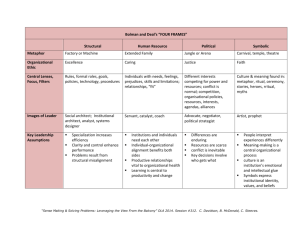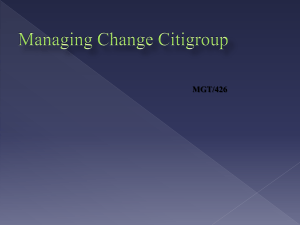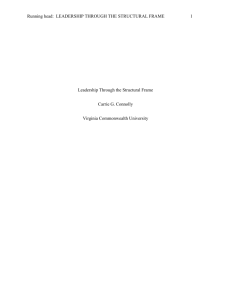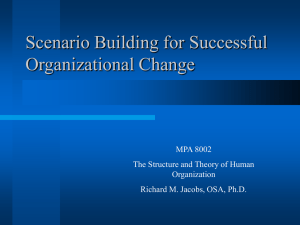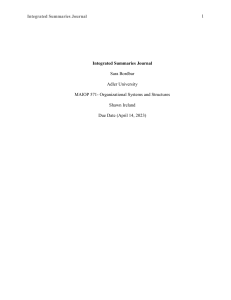1.2 MSM 610 - WordPress.com
advertisement
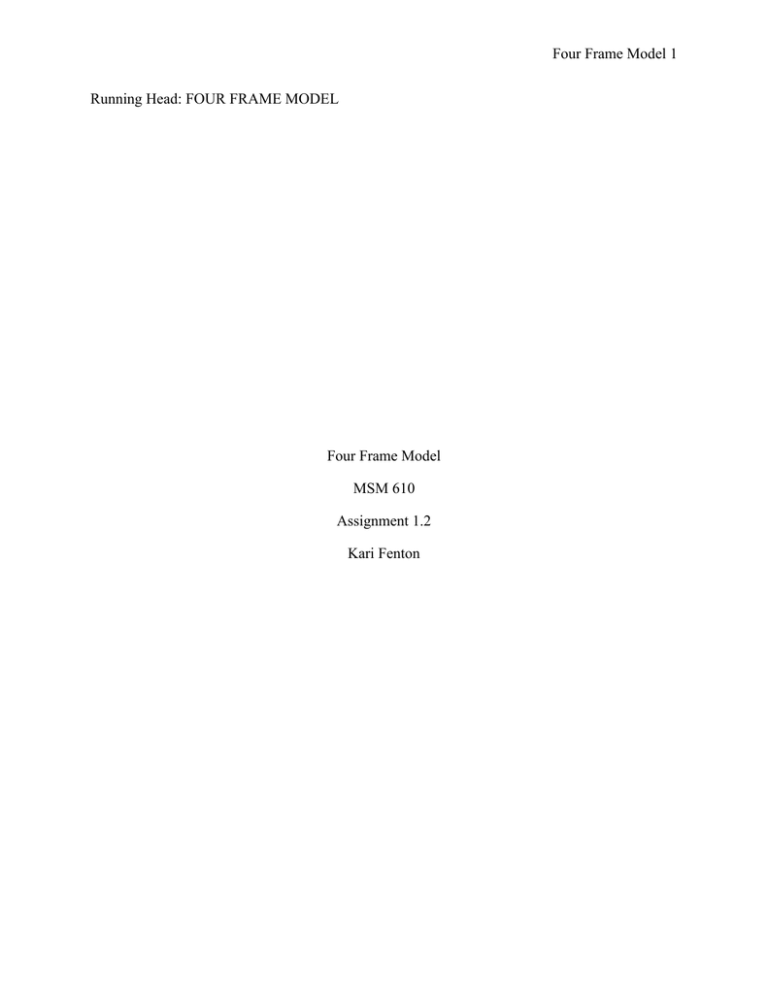
Four Frame Model 1 Running Head: FOUR FRAME MODEL Four Frame Model MSM 610 Assignment 1.2 Kari Fenton Four Frame Model 2 Four Frame Model According to Bolman & Deal (1991), the following four perspectives, referred to as the Four Frame model, can be used to understand organizations and leadership; structural, human resource, political, and symbolic. Further from this research, the Four Frame model can be an effective approach, not only to understanding a leader’s worldview but also how it relates to leadership effectiveness (Bolman & Deal, 1991). Bolman & Deal (1991) postulate that leaders often use only on or two frames but ideally need to rely on all four frames to be fully efficacious as both managers and leaders. Through the aforementioned notion, I can conceptualize the applicability of each frame within my organization. A frame I would like to utilize more, within my organization, is the structural frame. Being a sole proprietor and the only employee, it is convenient to remain free-natured. A way that the structural frame is utilized in my organization is that rationality always prevails over my personal agendas and pressures. I purposefully live a balanced and wholesome life so as to keep the two distinct. I am confident in the way in which I use the human resource frame in that my position within my organization is a perfect fit between me and the system! A proclamation is that due to the fact that I have found meaningful work, my organization puts out energy, talent, human service, and collaboration. My organization literally exists to serve human need rather than the reverse. Being a ‘one-man-show’ is an ideal way to avoid any conflicts within an organization, however; within the field of psychology, specifically in relation to private practice, there are a plethora of diverse beliefs, values, and interests. The political frame presented itself, within my organization, when I was confronted with serving the needs of the clients from health and human Four Frame Model 3 services. I was previously employed with Child Protective Services and when the rumor was out that I had started my own practice, phone calls started pouring in to request my services, which are typically handled through non-profit agencies. Due to the fact that local agencies had a 3 month waiting list, I agreed to start seeing their clients. It is an unspoken assumption, within the therapeutic community, that therapists in private practice adhere to a specific pay scale. Being less concerned with the therapeutic community and more attuned to our community in need, I made the decision to accept the non-profit rates to treat those clients within the system. For example, a typical psychological evaluation is in the range of $185.00; I agreed to accept the $25.00 pay out rate, for this service. My peers were offended and outraged that I ‘broke code’ and were convinced that I was wasting my time and ‘giving’ my services away. To handle this conflict, I met with several therapists and suggested collaboration amongst one another, where I could refer a percentage of these state cases onto them so their agency would be recognized within the family court system as well as feel the same satisfaction that I had felt through serving the community in need. Suffice it to say, there are now a number of therapists in private practice who are taking on some of these cases and easing the congestion of the nonprofits. Bolman & Deal (1991) posit that the symbolic frame is the least used frame amongst organizations. Ironically, I found the most utilized frame, within my organization, to be the symbolic frame. I assume this to be true in that I have chosen to express my ideals, values, and beliefs, through my life’s’ work. An example of when my organization has used the symbolic frame would be the decision to relocate my office to a poverty stricken area of the community. Last April, I opened my private practice in an affluent area of the city. Through unforeseen Four Frame Model 4 circumstances, I found that a majority of my clients have manifested from a need in the underserved community. As a symbolic gesture, I have chosen to relocate my office to a location that is accessible to the underserved target population. Four Frame Model 5 Reference Bolman, L.G. & Deal, T.E. (1991). Leadership and management effectiveness: a multi-frame, multi-sector analysis. Human Resource Management, 30 (4), pp. 509-534.
